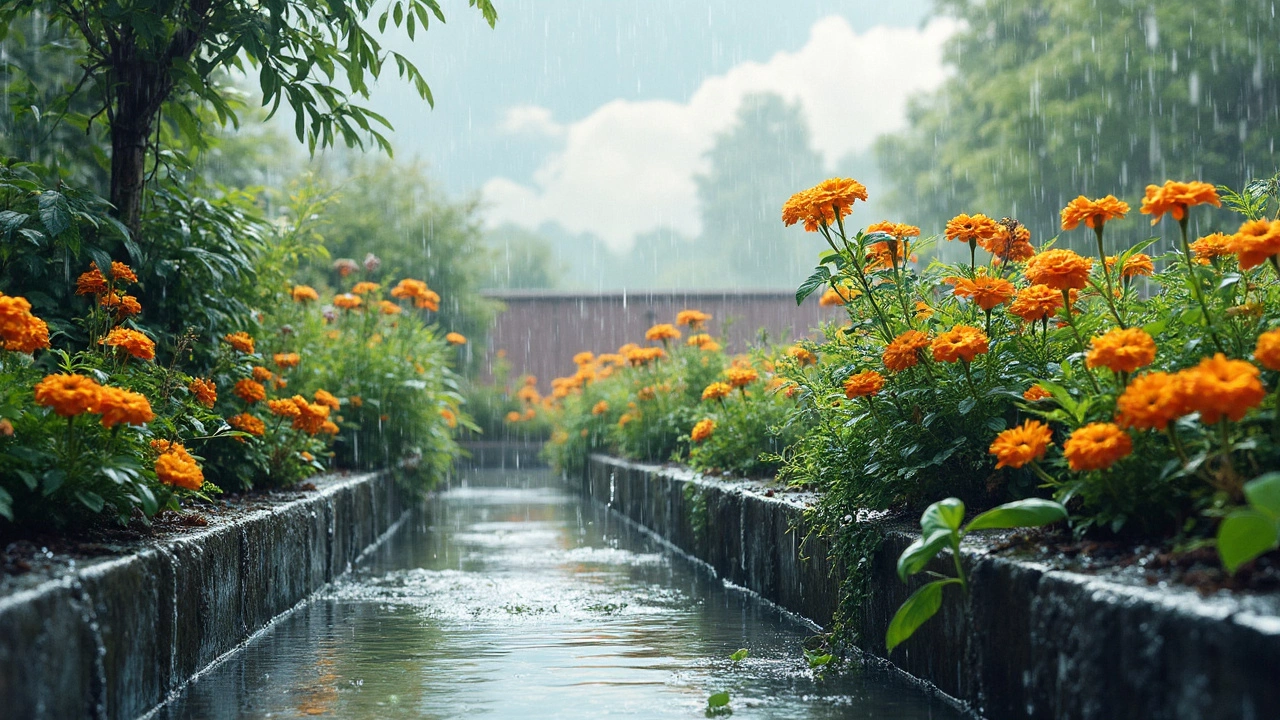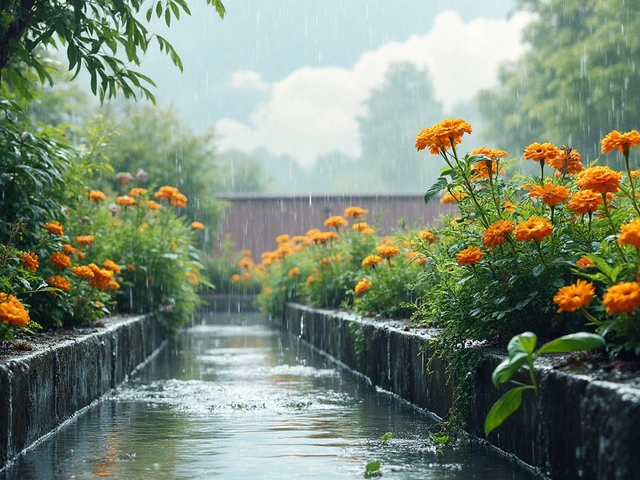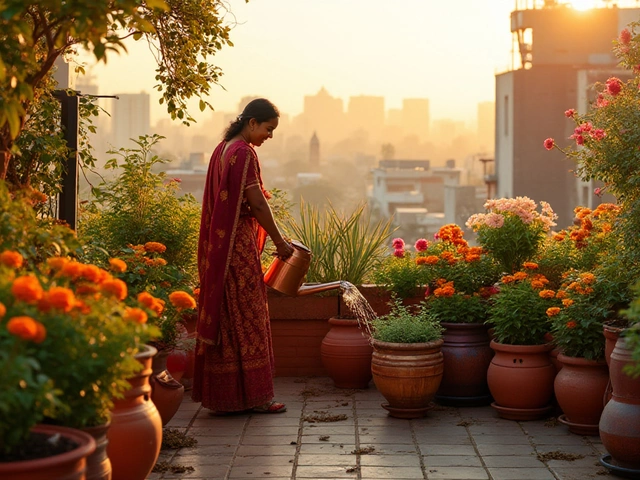You've finally decided to turn your terrace into a garden paradise, but hold up! Before you get those plants growing, let's chat about something you might not have considered: the slope of your terrace slab. Why is this important? Well, without proper drainage, you might end up with a swamp instead of a garden.
Generally, the terrace slab should slope away from your building at a rate of 1-2%. Sounds technical, right? It's not that bad. It basically means for every meter of terrace, the slab should drop by 1 to 2 centimeters. This helps rainwater to drain off smoothly, keeping your plants healthy and your terrace safe from water pooling issues.
Avoid the headache of soggy soil and waterlogged plants! A little planning and adjustment now can save you loads of hassle later. Plus, if you're DIY-ing it, many gardening stores have affordable tools to measure and adjust your slope. So grab a leveler and look at your slab's angle!
- Importance of Terrace Slope
- Ideal Slope Measurements
- Common Slope Mistakes
- Tips for Achieving the Perfect Slope
- Maintaining Your Terrace Garden
Importance of Terrace Slope
If you're serious about creating a terrace garden, understanding the slope of your terrace slab is like knowing the secret sauce. It's that important. Why? Because if water doesn't drain properly, you're inviting trouble—both for your plants and your property.
Firstly, let's talk about water pooling. Water is essential for plants, but too much of it can drown them. Excess water can lead to root rot, a disease that practically turns your plants to mush. The right slope ensures water doesn't stay put on your terrace, heading instead to designated drainage points.
Structural Integrity Concerns
Beyond plant health, there's your terrace's structural health. Constant water pooling can seep into cracks, weakening the structure. In worst-case scenarios, this can lead to leaks or water damage inside your home. A simple slope adjustment can prevent costly repairs down the line.
Protecting Your Investment
Think of your garden setup—plants, soil, pots—it's an investment. Letting water pool might mean repurchasing everything. With the right slope, you protect this investment by ensuring your garden thrives season after season.
Healthier Plants, Happier You
A well-sloped terrace means less stress for you. Your plants flourish, you avoid the chore of constantly adjusting water levels, and you get to enjoy a lush green space without constantly worrying about drainage. Isn’t that what gardening's about? A bit of effort now means less hassle later.
Ideal Slope Measurements
Getting the slope of your terrace slab just right is more than a minor detail; it's essential for a successful terrace garden. So, what exactly is the magic number for this slope? Experts say a 1-2% slope is ideal. This means that for every 100 centimeters (that's about 3 feet for us imperial system folks), the slab should drop between 1 to 2 centimeters. Simple but super effective!
Why Does It Matter?
Having the right slope isn't just about letting water flow off. A correct slope helps prevent water from pooling which, over time, can damage your garden's foundation or even lead to water seepage into your home. Nobody wants that, right? By directing water effectively, you can avoid these problems and ensure your terrace remains a thriving haven for your plants.
How to Check Your Current Slope
Not sure what your current terrace slope looks like? Here's a quick way to figure it out:
- Get a long spirit level or a simple leveling tool from your local hardware store.
- Place it flat on your terrace slab.
- Look at the bubble in the level to see where things stand. The bubble should ideally be slightly off-center if your slope is correct.
Adjusting the Slope
If you're in a pickle and need to adjust the slope, best consult a professional, especially if your slab is way off. However, if you're up for a bit of DIY, there are various leveling compounds you can add to adjust minor imperfections. Just remember, patience is key!
Ultimately, paying attention to terrace slab slope can save you many headaches and provide an optimal environment for your terrace gardening endeavors. Plus, your plants will thank you for keeping their home dry and comfy!
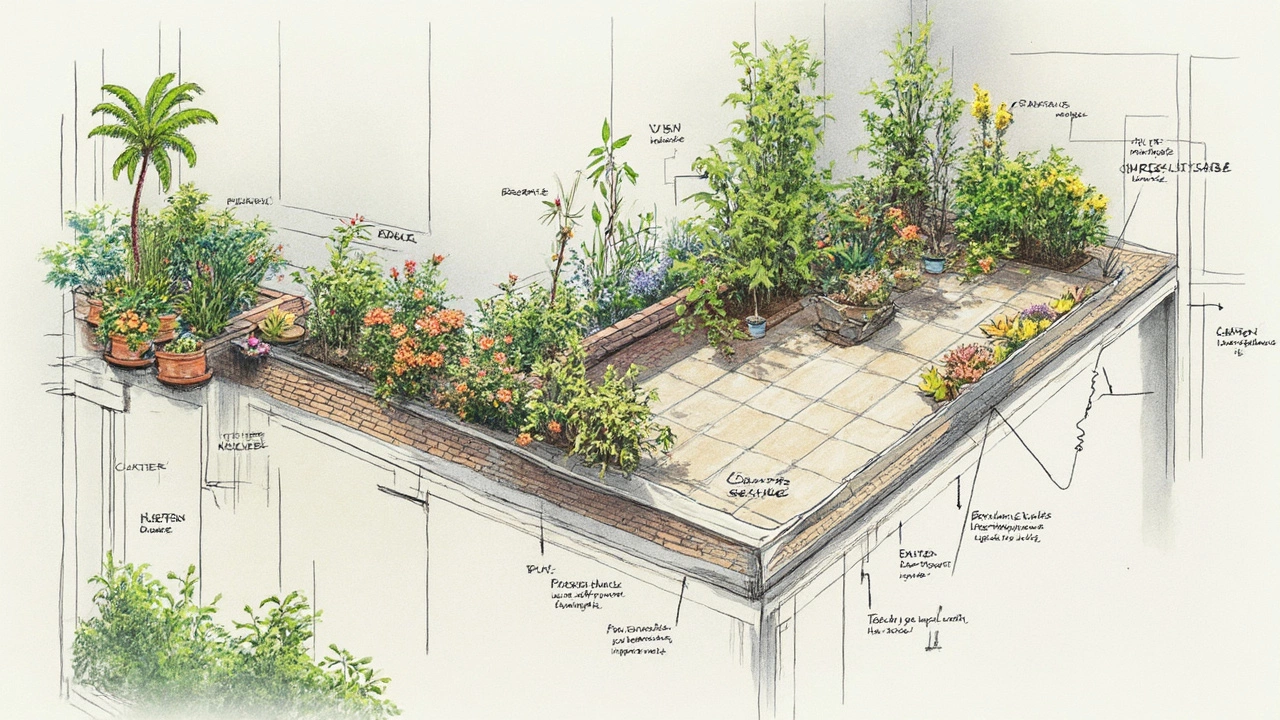
Common Slope Mistakes
When setting up a terrace gardening arrangement, one of the sneakiest pitfalls is getting the slope wrong. You might think, 'What's the big deal if it's slightly off?' Well, there's more to it than meets the eye.
Ignoring the Correct Slope
A major slip-up is having too little or too much slope. If the slab is too flat, water just sits there, which could lead to some nasty mold, leakages, or even crack your slab over time. On the flip side, if the slope is too steep, well, you might find your carefully arranged pots playing musical chairs the next time it rains!
Lack of Uniformity
Ever noticed puddles concentrated in one spot after a rain shower? Sometimes, the terrace slope isn't uniform, causing uneven drainage. Imagine a seesaw instead of a smooth ramp. That equals a bad day for your plants and your terrace.
Overlooking Existing Structures
Got a rooftop access door or maybe solar panels? They could interfere with the drainage if not accounted for in your terrace slab slope. Water might pool around these structures if not properly directed away.
Skipping Regular Checks
Hey, just because you got it right once doesn't mean it'll stay perfect forever. Environmental changes or even settlement of the building could mess with the slope. A quick once-a-year check can help avoid future surprises.
Incorrect Materials
Sometimes folks choose materials that increase friction or aren't smooth enough, causing erratic water flow. Make sure whatever surface you use, it helps facilitate the water's journey off your roof.
Fixing these mistakes might seem daunting, but trust me, they're manageable. Keep an eye on your slope, and make adjustments when necessary to avoid water logging and to keep your roof gardening game on point.
Tips for Achieving the Perfect Slope
So, you're ready to get that terrace gardening project off the ground, but you're worried about the slope. Don't stress! Achieving the right slope of your terrace slab isn't as tricky as it sounds. Here's a straightforward approach you can take.
Check the Existing Slope
Before making any changes, see what you've currently got. Use a straightforward tool like a spirit level. Lay it down on the slab and measure the angle. If your terrace slopes between 1 to 2%, you're golden! Anything flatter, and you've got some adjusting to do.
Adjust with Additional Layers
For those of you with a flat terrace, think about adding an extra layer. You can use a mortar mix or even lightweight concrete to create a gentle slope. Apply it in such a way that it gradually leads away from your building, ensuring efficient water drainage.
Professional Help
If DIY isn't your thing or if you're worried about doing it right, contact a professional. Many contractors specialize in creating slopes for terrace gardens. It’s a hassle-free way to ensure your slab is set at the perfect angle.
Install Drainage Systems
Even with a great slope, a drainage system can be a lifesaver in heavy rains. Simple gutters or a linear drainage system can help guide water away efficiently. Plus, they don't take much to maintain.
Regular Maintenance
Keep checking your slope every year or so to make sure it’s holding up. It's not a set-it-and-forget-it situation when it comes to roof gardening. Regular inspection can help you catch any early signs of potential water pooling.
Getting that slope just right can make all the difference in your terrace gardening adventure. Water drainage ensures not only thriving plants but also a long-lasting terrace structure. So, go out there, get those hands working, and let your garden dreams blossom without worries!
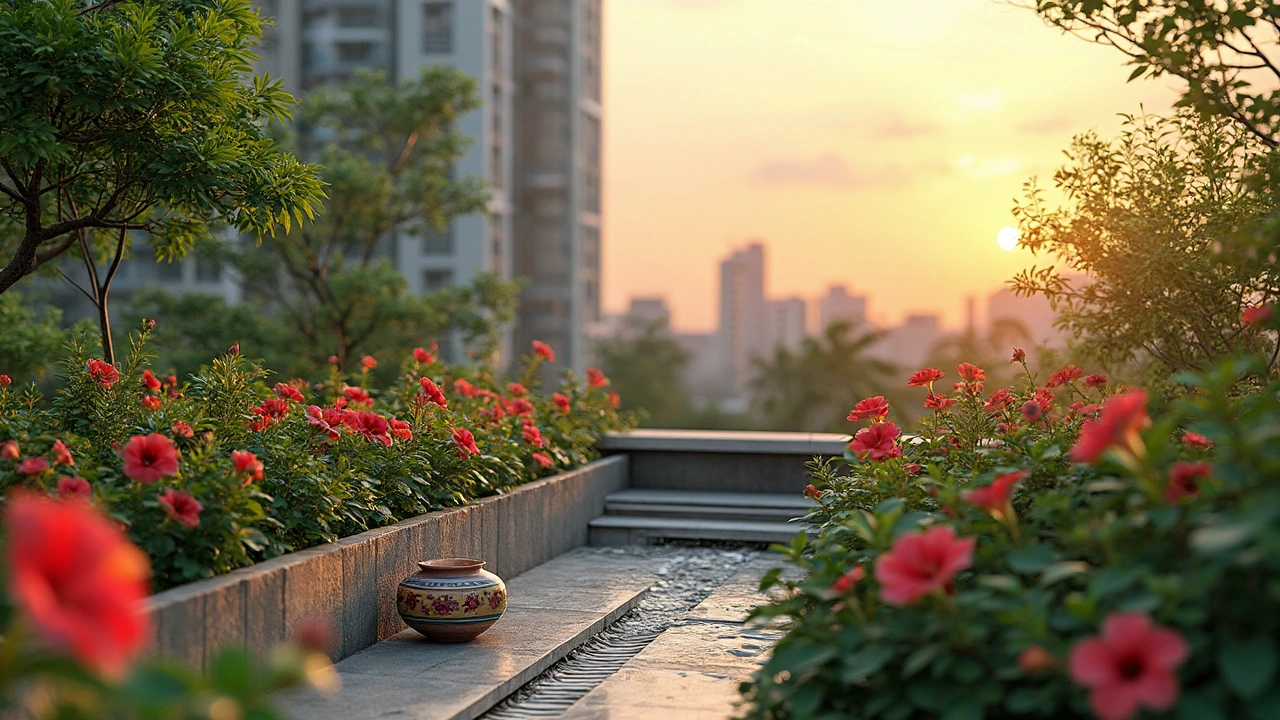
Maintaining Your Terrace Garden
Once your terrace garden is all set with the right slope, it's important to focus on keeping it thriving and looking fabulous. Terrace gardening requires a bit more attention than traditional ground gardens, but with some simple steps, you'll have a gorgeous green space.
Watering Wisely
Getting the watering right is key. Too much water can lead to soggy roots, especially if your terrace slab slope isn't perfect. Install a drip irrigation system if possible, which conserves water and delivers it right to the plants' roots. Alternatively, a simple watering can does the trick, just make sure water isn't pooling too much in any one place.
Choosing the Right Plants
Opt for plants that can withstand a bit of heat and wind—top contenders are succulents, lavender, and herbs like rosemary. They not only thrive in terrace conditions but also offer some great aromas and even kitchen uses.
Regular Check-Ups
Like a car, your terrace needs occasional check-ups. Keep an eye on drainage, especially during rainy seasons. Every few weeks, take a walk around and look for any signs of pooling or plant distress. Adjust the soil or slab if needed.
Seasonal Adjustments
- Spring: Refresh the soil with compost, start planting bright flowers.
- Summer: Watch for excessive drying, especially if your terrace gets lots of sun.
- Autumn: Trim back plants, gather seeds, prepare for colder weather.
- Winter: Use protective coverings to shield delicate plants from frost.
Fertilization Tips
Fertilizers keep your plants fed and happy. Choose organic options and follow the instructions to avoid over-fertilizing, which can do more harm than good.
Keeping Pests at Bay
Pests are part of gardening life. Use natural remedies like neem oil or soap sprays before reaching for harsh chemicals. Regular checks under leaves and soil can prevent infestations from taking hold.
If you're consistent with your care, your terrace garden will be the pride of your home. Not only will you enjoy fresh produce and plants, but you'll also boast about your perfectly sloped and well-maintained green oasis.
